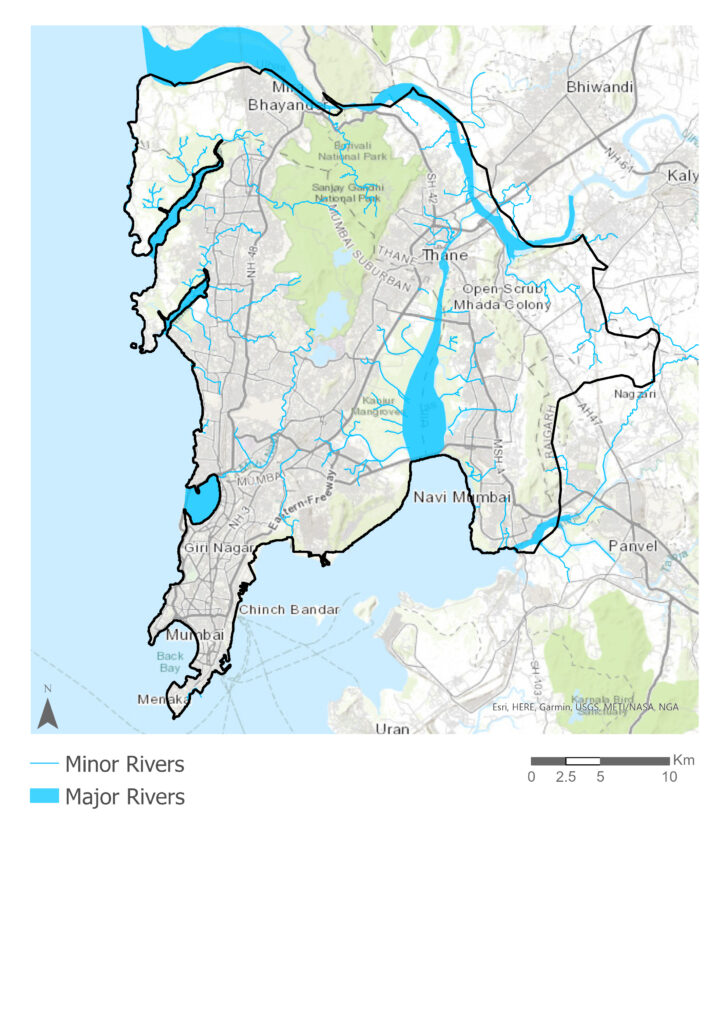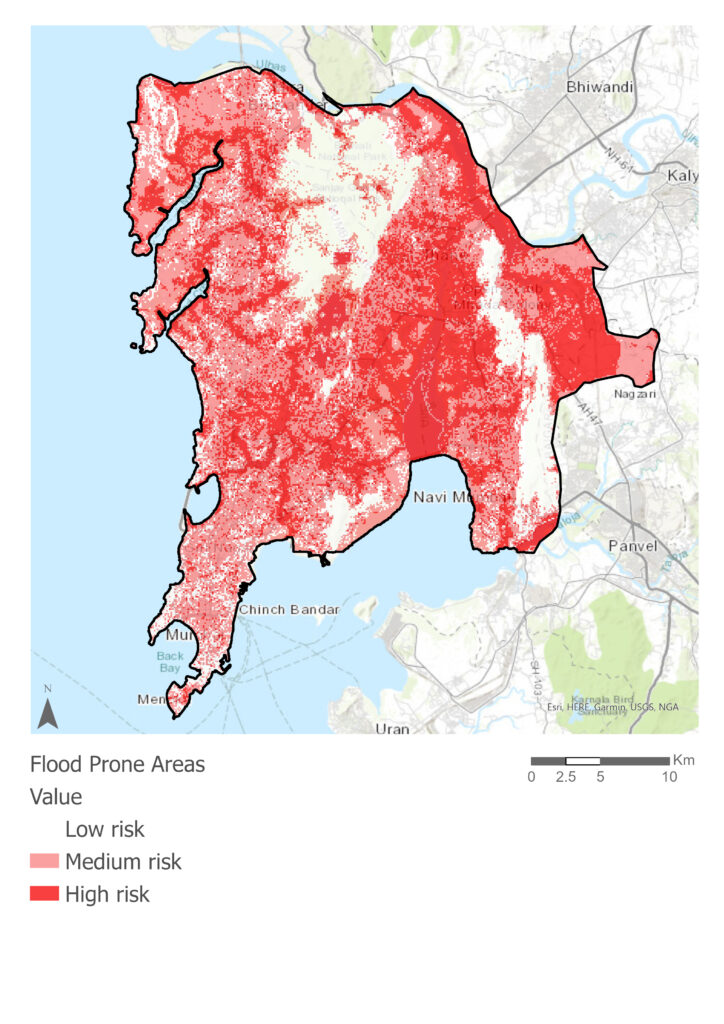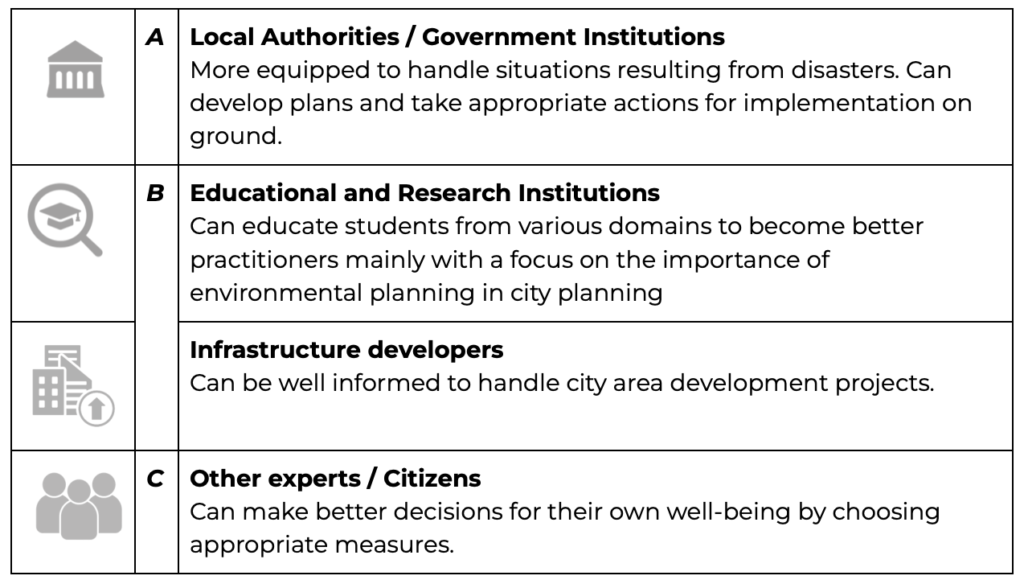Global climate change is affecting the weather patterns and increases episodes of high intensity rainfall which many a times result in urban floods and are becoming a serious phenomenon in urban areas. Flood fury is one of the most recurrent natural calamities that affects both human life and economy to a large extent, as stated by the Disaster Management Division by the Ministry of Home Affairs, Government of India. Increase in urbanization, illegal and legalized occupation of wetlands, unregulated construction along river banks and encroachment on water bodies are some of the key factors responsible for such disasters. As quoted by an author and naturalist, Har Borland, “When we generally talk about flood control, we usually first just think of dams and deeper river channels, to impound the waters or hurry their runoff and this is what we have been doing since years”. But this is not the ultimate solution, there is a need to integrate nature into planning of cities by developing biophilic spaces that act as a buffer to mitigate and adapt such flood scenarios. The phenomenon basically corresponds to ‘Sponge Cities’, a new urban planning model proposed by Chinese Researchers in early 2000, emphasizes flood management through strengthening of blue-green infrastructure (BGI) and nature-based solutions (NbS), instead of pushing grey infrastructure. This is the current urgent need which currently lacks in Indian Cities. Hence strengthening the governance aspect and awareness building here plays a crucial role.

PRIYANKA KULKARNI – Environmental Architect and Researcher
She has 10 years experience in the field of sustainable design and planning and managed diverse projects from macro-level urban-environmental-landscape planning to micro-level sustainable design. Passionate for urban nature-based solutions!
The above article is inspired and derived from the research work produced under International Sustainability Academy (ISA) Fellowship Program of Schutzgemeinschaft Deutscher Wald (SDW) e.V., during 2021-2022 in Hamburg, Germany. Later the project was presented in front of varied stakeholders as one of the scope under implementation work in the home country.
Ever wondered what exactly can be done to protect cities from such flood situations? Which concepts can be actually implemented in cities facing similar flood scenarios? Let’s dive into it!
Firstly, as an example, let’s have a look at the Case of Greater Mumbai Region located in Maharashtra State of India showcasing flood risk zones.
Greater Mumbai is recognized as the most densely populated city in India. As per the Municipal Corporation of Greater Mumbai (BMC), the total land area of this region is approximately around 437 sq.km., which is a part of Mumbai Metropolitan Region of about 6328 sq. km and is distinguished by hot and humid climate. Generally south-west monsoon arrives in the month of June and retreats in the month of September – average annual rainfall is about 1800 to 2400 mm. It has distinct geomorphology – coastal plains on its west side, central areas with water bodies like rivers and creek and hill ridges with intervening valleys, a national park and also a large area of mangroves.
Flood risks in Greater Mumbai Region and its extent are compounded by its history of unplanned growth, with buildings and infrastructure projects having destroyed flood-slowing mangroves and reduced once wide river channels to constrained creeks. Expansion of the city into the nearby seabed, on reclaimed land, also has been a problem, as explained by experts. In spite of having a good amount of blue and green elements as shown in fig. 1 below, its interlinking and strengthening becomes an essential part for flood risk reduction.

Spatial flood analysis
Based on preliminary research, a methodology was conducted by the author under the guidance of other experts to assess this region based on different parameters and understand flood risk zones in the region. Parameters considered were the digital elevation model, slope, precipitation, distance from the river, flow length, land cover and soil type. Through critical analysis and overlapping of these parameters by using geoprocessing tools on ArcGIS software, the map of flood prone areas depicting low, medium and high risk zones for Greater Mumbai Region and its extent was developed as shown below in fig. 2. This demonstrates the extent of the flood risks and why it should become a priority.

Now, how can such urban areas reduce flood risks? What measures can be undertaken?
Even though urbanization is inevitable, there is an urgent need to methodically understand the challenges of climate change and plan our cities by integrating nature as a primary priority as well as strengthening existing blue-green infrastructure. Development of biophilic corridors in major risk areas through application of concepts such as nature-based solutions and blue-green infrastructure planning will not only help to preserve ecosystem services, but indirectly help to reduce such flood risks and develop more climate resilient, sustainable and livable cities. Biophilic corridors are green and blue spaces that not only act as the buffer to mitigate such flood but also provide healthier environmental quality and promote users’ connection with nature. These include blue and green infrastructure elements at city and building level, choice of sustainable materials and drainage systems and preservation/development of natural ecosystems as illustrated by the Author in Fig.3.

Isn’t it intriguing? So what’s the urgency to incorporate such measures in city planning?
Environmental planning as a tool will help to understand the solutions for such disasters and also achieve inclusive planning. But to integrate such actions, participatory approaches, meaning involvement of different stakeholders can primarily play a dynamic role and can contribute in planning and implementation of measures as shown in Table 1 below. Awareness building among stakeholders regarding the importance of implementation of blue-green infrastructure planning and nature-based solutions at different urban scales thus becomes of the utmost importance.

Facts
- It is important to gain a deep understanding of various concepts regarding integration of nature into city planning to create biophilic spaces and its key benefits.
- Governance aspect plays a crucial role for implementation of such measures for making our cities sustainable, resilient and liveable.
- Limited knowledge gaps within stakeholders, hence educating different stakeholders regarding such concepts can be a greater contribution to initiate actions for implementing sustainability measures.
Key Takeaway
It is central to raise awareness regarding the importance of nature-based solutions and the strengthening blue-green infrastructure and urge for its integration in city planning strategies through communication outreach. Such awareness building among focused groups and suitable actions for incorporating measures will not only help to preserve the existing blue-green elements, but also reduce the need for grey infrastructure, thereby being beneficial in developing ‘flood resilient and nature-positive’ cities.
References to go further
Blue-Green Infrastructure: An Opportunity for Indian Cities. (2021). Observer Research Foundation.
Brihanmumbai Municipal Corporation. (2020). Environmental Status Report 2020-2021. MCGM ESR.
Sebestyén, I. (2020). IUCN Global Standard for Nature-based Solutions. IUCN Portal.